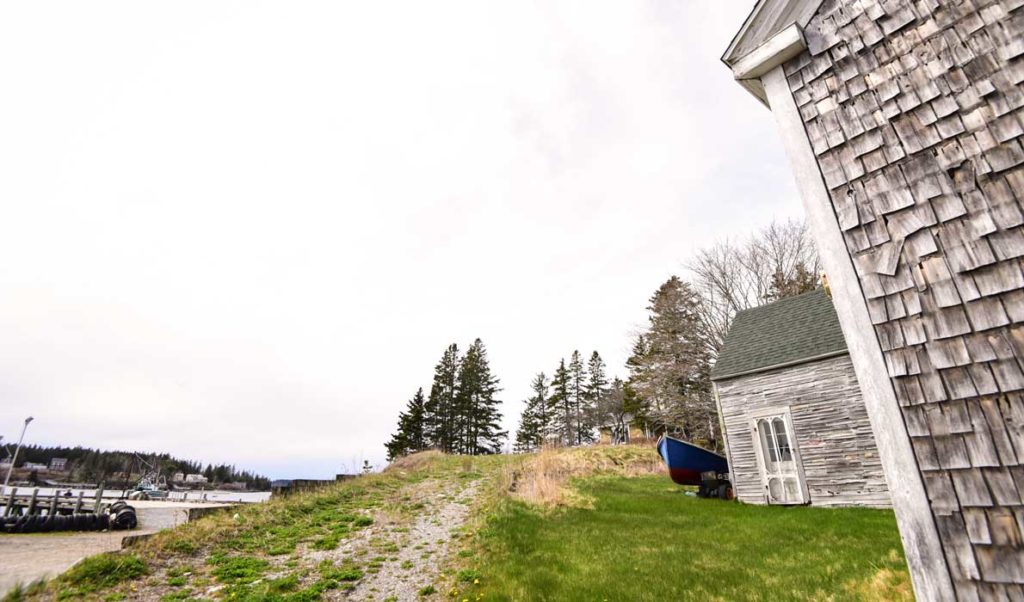Reflections is written by Island Fellows, recent college grads who do community service work on Maine islands and in coastal communities through the Island Institute, publisher of The Working Waterfront.
By Ellie Mason
For years now, I have been turning the term “solastalgia” over in my mind. Coined by the Australian eco-philosopher Glenn Albrecht, solastalgia, in its simplest form, is about missing a loved place that still exists but to which the old birds and plants and animals no longer come. It is a yearning for a place you still inhabit, but has been irrevocably changed, usually due to a physical disturbance.
Just last week, I went storm chasing during a super moon full tide and watched the waves crash against the shoreline, eventually flooding the narrow road right along the ocean’s edge. I thought about growing up as a child of Maine’s islands, about leaving Maine for college, and about ultimately coming home.
I grew up on Mount Desert Island, where the mountains meet the sea and where you can hike a peak to escape the crowded summer traffic below while picking wild blueberries alongside the trail. It’s a place that only too well knows the cycles of seasonal change.
There is a mystery intrinsically tied to the places we inhabit so dearly, a sort of unknowing about what is coming next, but a comfort in knowing the places we drive and walk by each day look enough the same as they did yesterday. Right now, in late April, I am eagerly awaiting spring—a consistent spring—where the weather is warm enough to read a book by the water, or to not worry that all the school’s garden seedlings will die in an overnight frost.
I leave my window open each night just hoping to hear the spring peepers as they crawl their way out of winter hibernation. As spring makes her slow way home, I keep journal pages cataloguing all the new shades of green I see on my daily walks.
I worry, too. I worry about what will happen next. What places will remain the same, what will change, and what will look different in a month or a year?
In St. George, the town I live and work in, there are markers of the community that I have come to know and love. The marsh trail where I can look for birds and evidence of nocturnal animals. The library community room where I can always count on seeing a familiar face. Or the neighborhood access paths that cut through private property that has graciously been opened for foot traffic to beautiful secret patches of shoreline.
I think the best thing we can do for each other and for ourselves is to acknowledge the worry and the uncertainty and to live in companionship with it. What I mean is, we are all yearning for the places we still inhabit even though they are irrevocably changing. But we are also yearning for a hopeful future where things look the way they did only a few months ago.
During this first year of my fellowship I have grappled with understanding how my sense of place has changed. To be honest, I’m not sure it has changed much except I love things in a bigger way now. I love the way the trees look when the fog rolls in, and the crook of the harbor where there’s a house with an old bathtub in the front yard, and I love jumping in the puddles on the school trail with students after a big November rainstorm.
I want to exist in tandem with the changing seasons and the changes of the world, to appreciate the colors of spring and to acknowledge the ephemeral nature of each day—that this day might be the only day I ever see the sunset light up the clouds in that shade of purple.
Ellie Mason serves as an Island Fellow in St. George through the William Bingham Fellowship in Rural Education. She works with the St. George School and Blueberry Cove on a sustainable afterschool program. A graduate of Smith College, Mason majored in arts in environmental science and policy.





